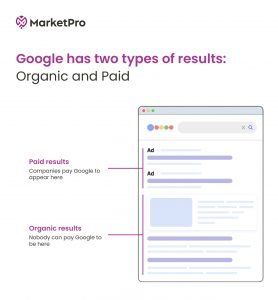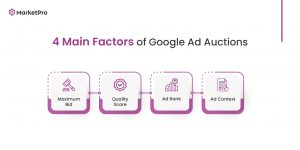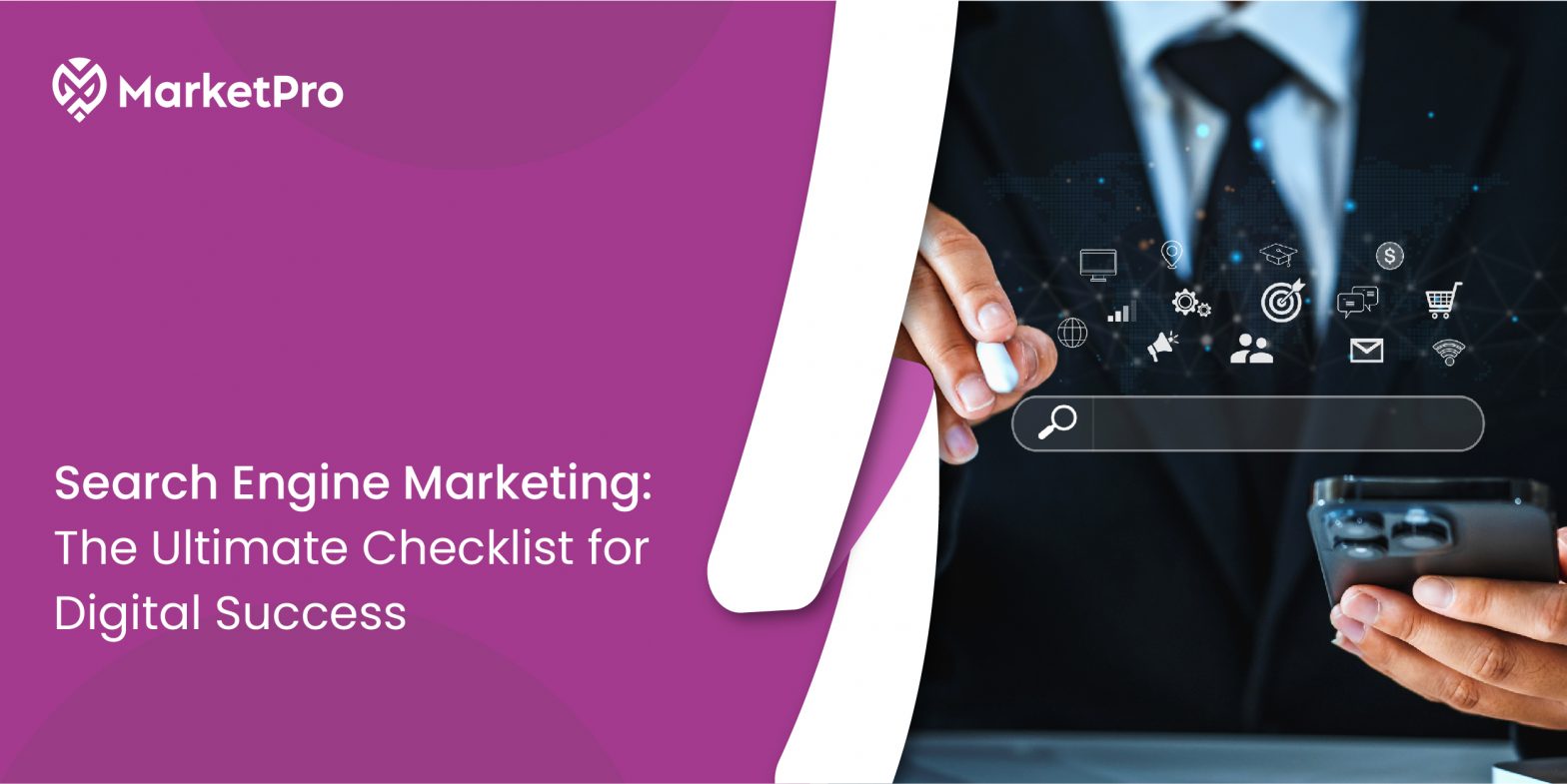Search engine marketing (SEM) is a digital marketing strategy that puts advertisers in the driver’s seat. Advertisers pay Google to appear at the top of their search engine results, giving them complete control over their online visibility.
Website links with “ads” or “sponsored” labels in their search sections mean they are paid ads, which the website paid to get its listing on top.
This article will cover how SEM works and what measures to consider before conducting efficient search engine marketing.
What is Search Engine Marketing?
Search engine marketing refers to the paid advertising model, in which marketers pay Google to show their ads above organic search results, ultimately increasing their visibility and reach.
Unlike Search Engine Optimization (SEO), which works on generating organic search results and reach, SEM simply ranks its ads with a paid search advertising model.

Why is SEM Important?
Search Engine Optimization (SEO) generates organic search results effectively without costing marketers a dime of their budget.
However, this luxury comes with a price: the time and patience required for companies to see their SEO’s magical impact.
With increased competition and consumers’ interest in search engine platforms, companies cannot wait for SEO efforts to emerge in their consumers’ eyes. Instead, they can pay Google to appear in their consumers’ search engine results at the right time and place.
Organic SEO is great, but when it comes to ramping up the speed and process of finding out, SEM will always be the logical choice. Visitors who search for a particular product or service on search platforms already possess some, which increases their probability of buying a product when they search for a relevant query on Google.
This way, companies practicing SEM in Google search for online Ecommerce stores or SAAS businesses open immense opportunities for driving high-quality traffic.
SEM Vs. SEO: Which One is Dominating the Search Market?
SEM (more likely, search engine marketing) is related to Pay-Per-Click (PPC) as advertisers only pay when their ads get clicks.
Suggested Read: SEO vs PPC Services: Key Differences, Pros, Cons, & Why They’re Important
SEM is a strategy where marketers bid on their ads with high-quality scores and maximum bids to appear at the top of Search Engine Result Pages [SERPs]. These ads appear at the top of search listings without worrying about better domain authority and backlinking background.
In SEO, Google demands no payment for its conduction as it generates free organic traffic to its website and gets ranked on Google’s search engine results with domain authority, which is higher and content that resonates and relates with search engine users.
Duration: Meanwhile, in SEM, businesses can get paid traffic and impressions on their websites immediately by spending money on ads. Due to the backlinking and internal efforts required to improve website content, SEO may take several weeks or months to finally show its effectiveness.
Control: With SEM, businesses gain control of their search advertising efforts and can direct their advertising campaigns anytime. Conversely, SEO cannot relish this liberty as it is more likely to depend on search engine platforms to rank and improve its website’s search visibility.
Both SEM and SEO work efficiently in their respective domains. Businesses with longer sales cycles, sufficient paid advertising budgets, and intent on building credibility and trust in their industry generally use SEO. On the other hand, companies that promote event-sensitive offers and products and want to drive immediate results typically use SEM.
How SEM Strategy Works
Search engine marketing agencies are adept at crafting ads with relevant keywords and compelling content that appear in users’ search results whenever they search for appropriate products or services.
Setting up an SEM campaign, the guidelines and steps businesses need to consider:
Keyword Research
In this stage, the marketer needs to understand their products and services, then divide keyword strategies that gather and research relevant keywords that mainly relate to their user’s search intent. Marketers need to thoroughly understand their audience demographics, their competitors, and emerging trends in their industry.
Keyword Budget
Marketers need to arrange the list of their keywords and manage their budget constraints. Keywords with high search volume also cost advertisers more when bidding. Advertisers work on enhancing their content relevancy and quality by earning higher-quality scores, which reduces the bidding cost of their ads.
Targeted Ads
One of the SEM’s main Unique Selling Points (USPs) is its ability to segment its target audience. This gives marketers better opportunities to target their audience based on their geographic location, behaviors, online preferences, and local search intent.
Ad Creation
Marketers create text-based ads based on their ad group, considering their keyword research and competitors to display on search engine results.
Tracking Campaign’s Progress
The final step is continuously monitoring the campaign’s performance with Google Analytics, which provides valuable insights into website traffic and conversions. Businesses can track their performance by improving ad content, keyword strategies, and landing page optimization to generate maximum conversions.
How does an Ad Auction Work?
Search engine platforms provide a complete process for marketers to conduct ad auctions efficiently and effectively.
Businesses can benefit from terms like quality score and context relevancy when managing their ad budget. These terms help businesses with sufficient money to invest in their ads. Businesses can save on bidding costs by taking advantage of other bidding terms.

The four main factors of how Google auctions its ads:
- Bid: It includes the maximum amount of money businesses are willing to pay for every click their ad generates.
- Quality score: Google suggests three factors that will increase the ad quality score: the expected Click Through Rate (CTR) and the likelihood of the ad clicking when it appears in search engine results. Second, it’s about ad relevance and how ad content matches user search intent. Third, it’s about a top-notch landing page experience.
- Ad Rank: Businesses rank their ads based on factors like their bid amount and ad quality scores, adding additional information like a phone number or additional ad assets like linking ads to more specific pages on their business sites.
- Ad Context: Google considers ad-context when calculating ad rank. They checked the different search terms the person had entered the person’s location and device when conducting their search.
Benefits of Paid Advertising with Google
Did you know that multiple brand appearances in search engine results increase the likelihood of user clicks by 50%?
Paid advertising, especially in Google search, allows brands to connect with their relevant audience at the right time and place.
Some of the benefits of SEM that stand them apart from other B2B Digital Marketing strategies:
- No hassle around enhancing domain authority— With SEM, businesses don’t need to worry about backlinking and writing tons of guest posting content with the expectation of appearing at the top of search engine results.
- Get access to immediate results– With SEM, businesses can increase their visibility, search, and reach among search engine platforms with paid advertising that takes its presence on Google and makes itself available for immediate impressions and reach, providing a massive boost in brand development.
- Simple to gauge– Businesses know how much they spent and the return they receive on their ads expenditure. This transparency helps them continue their campaign with more surety and confidence.
Major Takeaways: SEM is the Future!
With the rise of consumer presence on search platforms, businesses will invent new ways and techniques to better understand their users’ queries and provide precisely what they need. SEM will be a dominant player in the future search market. Its adaptability to cater to users’ various demands and needs at the right time and place with a better user experience will always be a USP for SEM. Businesses can get better opportunities to reach their target audience and increase their market capital quickly.
With Market Pro, businesses can escape the competitive heat of advertisements on search engine platforms. Market Pro’s Professional individuals with the right expertise can instantly introduce your brand to your target audience and boost your brand’s search visibility.

